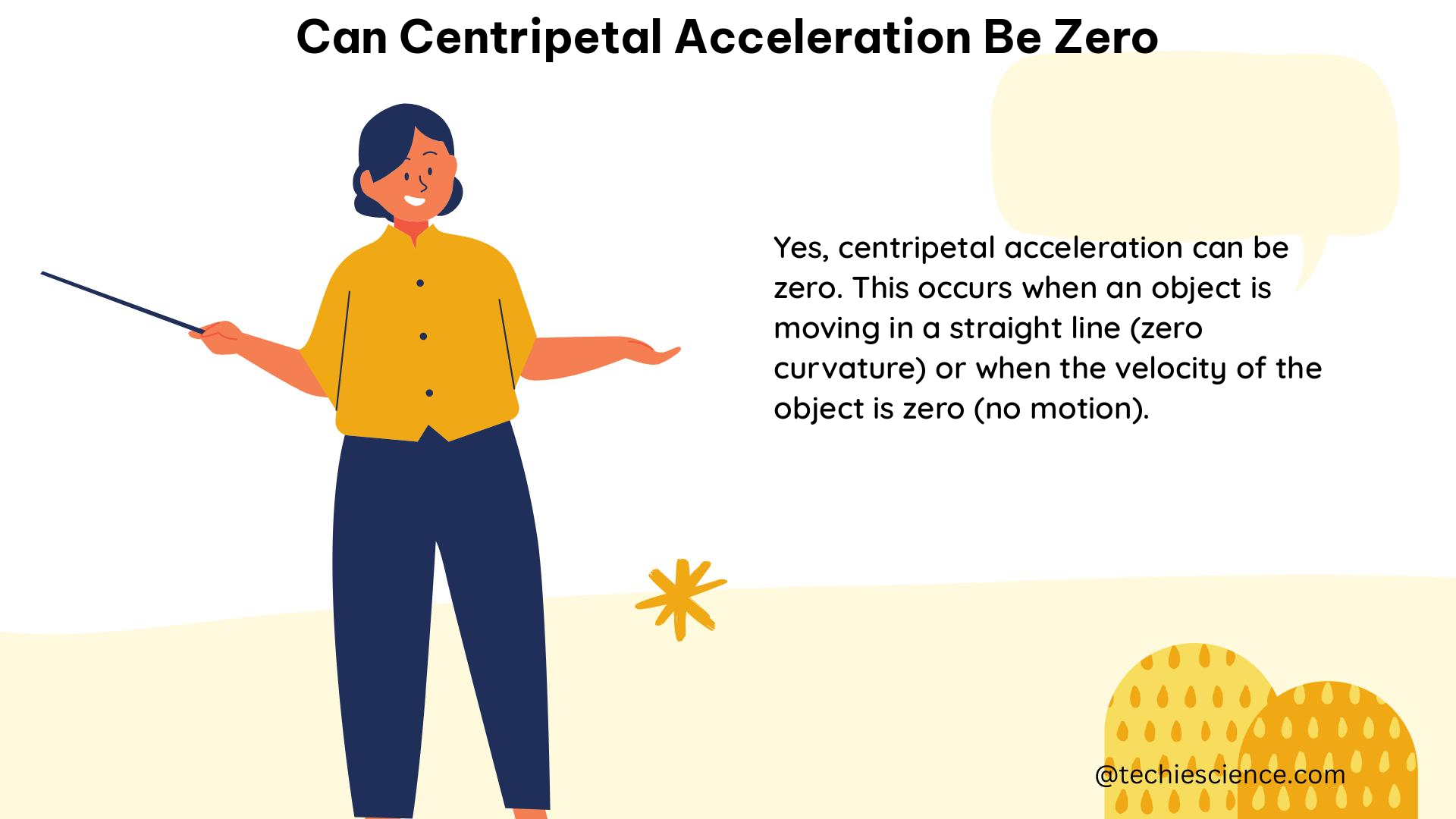Centripetal acceleration is the acceleration experienced by an object moving in a circular path, directed towards the center of the circle. It is a fundamental concept in physics that describes the change in direction of an object’s velocity, which is necessary for the object to maintain a circular trajectory. The formula for centripetal acceleration is aₗ = ω²r, where ω is the angular velocity and r is the radius of the circular path.
Understanding Centripetal Acceleration
Centripetal acceleration is a vector quantity, meaning it has both magnitude and direction. The direction of the centripetal acceleration is always towards the center of the circular path, perpendicular to the object’s velocity. This acceleration is necessary to keep the object moving in a circular path, as it counteracts the object’s tendency to move in a straight line due to inertia.
Conditions for Centripetal Acceleration to be Zero
Centripetal acceleration can only be zero under two conditions:
-
Object is not moving in a circular path: If an object is not moving in a circular path, then there is no change in the direction of its velocity, and therefore, no centripetal acceleration.
-
Radius of the circular path is zero: If the radius of the circular path is zero, then the object is effectively moving in a straight line, and there is no change in the direction of its velocity, resulting in a centripetal acceleration of zero.
Examples of Centripetal Acceleration Being Zero
-
Simple Pendulum at the Apex: In the case of a simple pendulum, the centripetal acceleration is zero at the apex of the swing. At the apex, the velocity of the pendulum is zero, and therefore, the centripetal acceleration, which is derived from the velocity, is also zero.
-
Object Moving in a Straight Line: If an object is moving in a straight line, its velocity vector remains constant, and there is no change in the direction of its motion. As a result, the centripetal acceleration is zero.
-
Object Rotating on a Fixed Axis: When an object is rotating on a fixed axis, the radius of the circular path is constant, and the object’s velocity is tangential to the circular path. In this case, the centripetal acceleration is zero, as the object’s velocity is always perpendicular to the radius.
Numerical Example
Consider a particle moving in a circular path with a radius of 2 meters and an angular velocity of 3 radians per second. The centripetal acceleration of the particle can be calculated as follows:
aₗ = ω²r
aₗ = (3 rad/s)² × 2 m
aₗ = 18 m/s²
In this example, the centripetal acceleration of the particle is 18 m/s², which is not zero.
Factors Affecting Centripetal Acceleration

The magnitude of centripetal acceleration is affected by two main factors:
-
Angular Velocity (ω): The centripetal acceleration is directly proportional to the square of the angular velocity. As the angular velocity increases, the centripetal acceleration also increases.
-
Radius of the Circular Path (r): The centripetal acceleration is directly proportional to the radius of the circular path. As the radius increases, the centripetal acceleration also increases.
It is important to note that the mass of the object does not affect the magnitude of the centripetal acceleration. The centripetal acceleration is determined solely by the angular velocity and the radius of the circular path.
Centripetal Acceleration in Uniform Circular Motion
Uniform circular motion is a special case of circular motion where the speed of the object remains constant. In this case, the centripetal acceleration is directed towards the center of the circular path and is perpendicular to the object’s velocity.
The formula for centripetal acceleration in uniform circular motion is:
aₗ = v²/r
where v is the linear velocity of the object and r is the radius of the circular path.
Numerical Example
Consider an object moving in a circular path with a radius of 5 meters and a linear velocity of 10 meters per second. The centripetal acceleration of the object can be calculated as follows:
aₗ = v²/r
aₗ = (10 m/s)²/5 m
aₗ = 20 m/s²
In this example, the centripetal acceleration of the object is 20 m/s², which is not zero.
Conclusion
Centripetal acceleration can only be zero if the object is not moving in a circular path or if the radius of the circular path is zero. In all other cases, an object moving in a circular path will experience a non-zero centripetal acceleration, which is necessary to maintain its circular trajectory. The magnitude of the centripetal acceleration is determined by the angular velocity and the radius of the circular path, but not the mass of the object.
Reference:
- https://www.vaia.com/en-us/textbooks/physics/university-physics-volume-1-1-edition/chapter-4/problem-87-a-particles-centripetal-acceleration-is-amathrmc4/
- https://physics.stackexchange.com/questions/553280/for-a-simple-pendulum-why-is-the-centripetal-acceleration-zero-at-the-apex
- https://www.physicsforums.com/threads/multiple-answers-to-this-question-centripetal-acceleration.458519/

I am Raghavi Acharya, I have completed my post-graduation in physics with a specialization in the field of condensed matter physics. I have always considered Physics to be a captivating area of study and I enjoy exploring the various fields of this subject. In my free time, I engage myself in digital art. My articles are aimed towards delivering the concepts of physics in a very simplified manner to the readers.